A territory often forgotten by frequent travellers, Kabylie is nevertheless a land full of wonders. Discover today what is nicknamed “the region of the mountains”.
Summary
- Djemila, a historic land
- Béjaïa, the eternal land
- National parks
- – Djurdjura National Park
- – Gouraya National Park
- The coast road
Who has never heard of the beauty and grandeur of Algeria? However, one of its regions, Kabylia, is still too little known to frequent travellers… With a history dating back several millennia and often fraught with conflict, it is nevertheless one of the most beautiful regions in the world.
Map of Kabylia – Photo credit: Google Maps & travelzad.com
Land of vestiges, land of mountains, Kabylie is as surprising as it is tasty. This is why Generation Voyage presents to you today some of the prettiest corners of the “land of free men”.
Between national parks, memories of the Roman Empire and breathtaking landscapes, discover a land that will never leave you, once you have set foot on its soil: Kabylia!
Djemila, a historic land
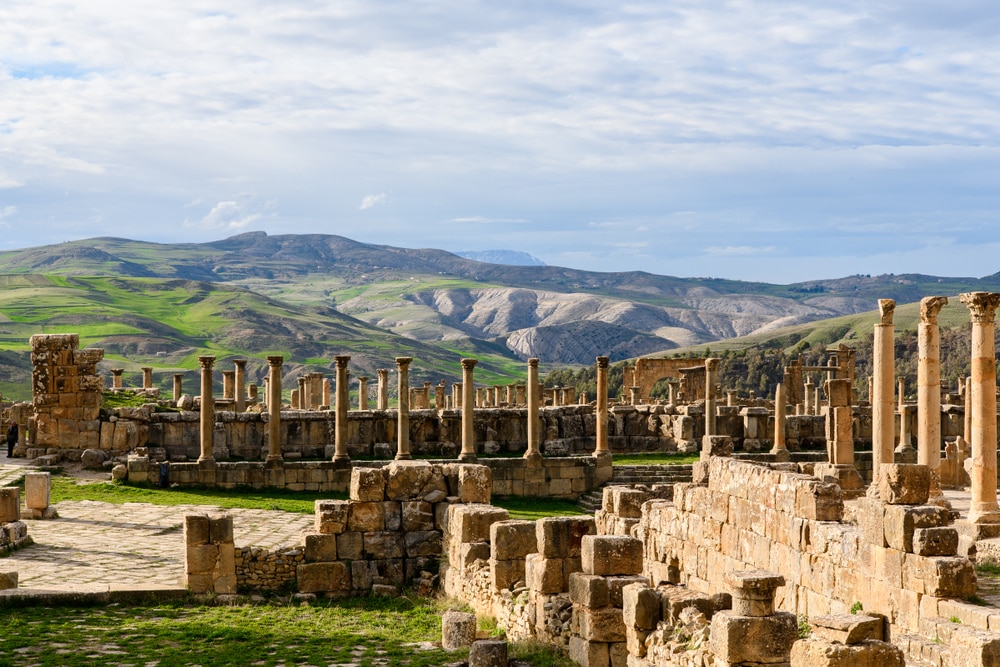
IDjemila and its ancient remains – Photo credit: Shutterstock – Anton_Ivanov
It is in Djemila that our journey in Kabylie begins. And how else, to place the historical context of this region, than to start with a stay in the heart of the one whose name means “the beautiful one” in Arabic?
Indeed Djemila, located 50km north of Sétif, is one of the jewels of Roman architecture in Africa. Founded in the 1st century AD, the one that was then named Cuicul reminds us of the power of the Roman Empire. Reminds us, or simply teaches us, that Kabylia is a region steeped in history.
But the latter was not always reduced to a precise delimitation… Formerly, its borders were not as defined as they are today. In fact, Kabylie designated all the territories where the Kabyle populations , the people of free men, were found. Thus, we spoke of Kabylies of Tunis , Morocco , Saoura and Ouarsenis.
It was not until the 19th century that the location of the region was defined more precisely. The heart of the Tellian mountains, between Algiers and Constantine, then became its cradle.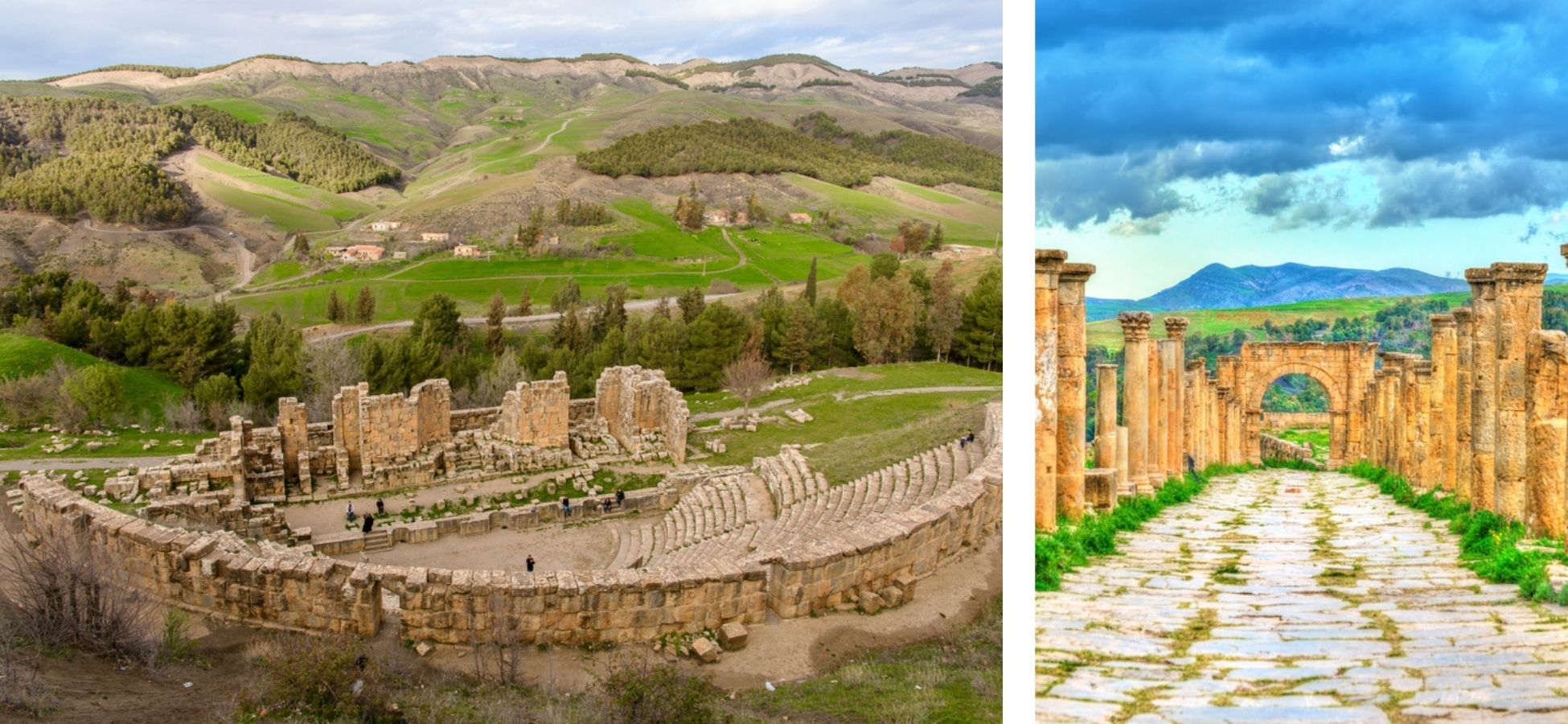
Remains of the Roman Empire in Djemila, Kabylia – Photo credit: Shutterstock – Anton_Ivanov & Leonid Andronov
Djemila, on the other hand, is impressive. It’s hard to imagine that you’re in Algeria and not on the Italian coast when you stroll through the heart of these Roman remains, almost two millennia old. Here, forum, capitol, temples and sanctuaries surpass us, while the state of conservation of these monuments surpasses us.
Perhaps it is the softness of the Kabyle mountains, located all around the site, which preserves as if by magic the magic of these places? We then lose ourselves in imagining the Arch of Caracalla remaining voluntarily immobile, frozen on its two feet, so as never to have to stop admiring the beauty of the landscape…
The wind escaping from the aisles and brushing against the walls of the baptistery whispers memories of a bygone Christian era. Discovered in 1909 and classified as a UNESCO World Heritage Site, this archaeological site is a real marvel that we advise you to visit at all costs. You can also take a tour of the museum located at the entrance to the park, which will tell you about the details of the ancient pieces found by archaeologists…
Béjaïa, the eternal land
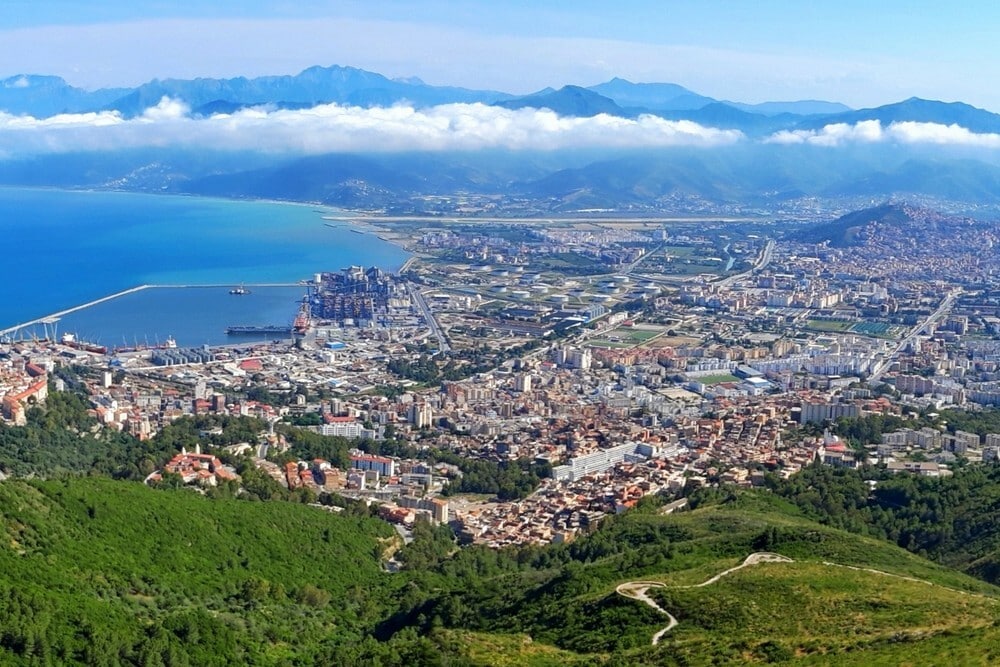
View of the city of Béjaïa – Kabylia – Photo credit: Shutterstock – salem bekka
Béjaïa is both a commune, located on the shores of the Mediterranean Sea about 250km from Algiers, but also a wilaya of Kabylie, large with 52 communes. Here, it is of course the pretty “capital of lower Kabylia” that we are lingering.
Béjaïa, whose name means “candle”, is both a surprise and a delight. A true paradise city, everyone can find what they are looking for during a trip. Fauna, flora, beaches, cliffs and ancient remains give its landscapes an incredible diversity.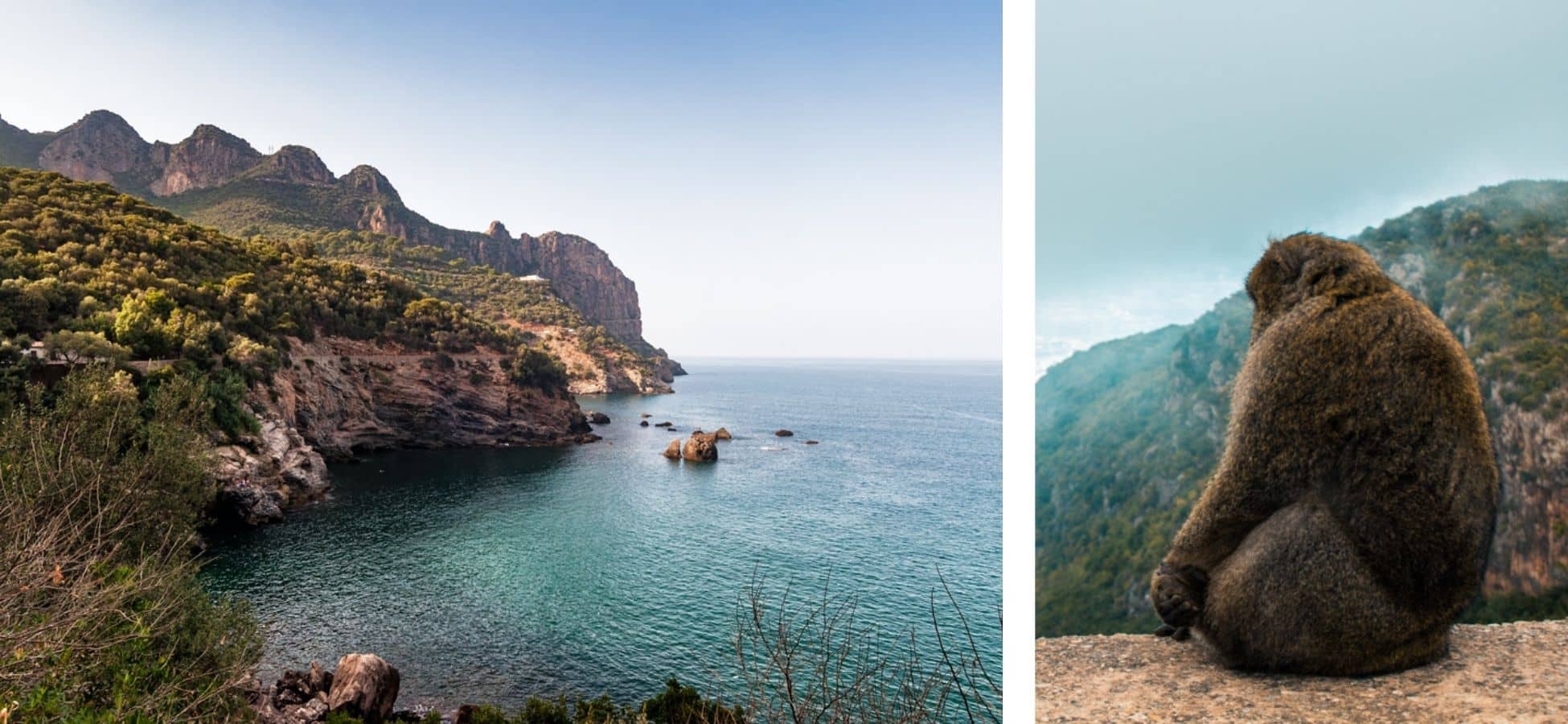
Pic des singes, Béjaïa – Kabylie – Photo credit: Shutterstock – Morad art & badiskharfane
For us, the most impressive remains the so-called “monkey peak”. Located on the outskirts of Gouraya National Park, the latter reminds us of the unique Monkey Forest of Ubud, in Bali. Captivating, enchanting, you will need to plan half a day and sturdy shoes to enjoy this hike like no other.
Another great must in Béjaïa is its “Cap Carbon”. Dominated since 1907 by one of the highest lighthouses in the Mediterranean, the “Cap Carbon” best represents the beauty and strength of the Kabyle mountains. With its famous 5 km hiking trail, it is accessible to all and offers young and old alike the opportunity to discover one of the most exceptional viewpoints in the Mediterranean.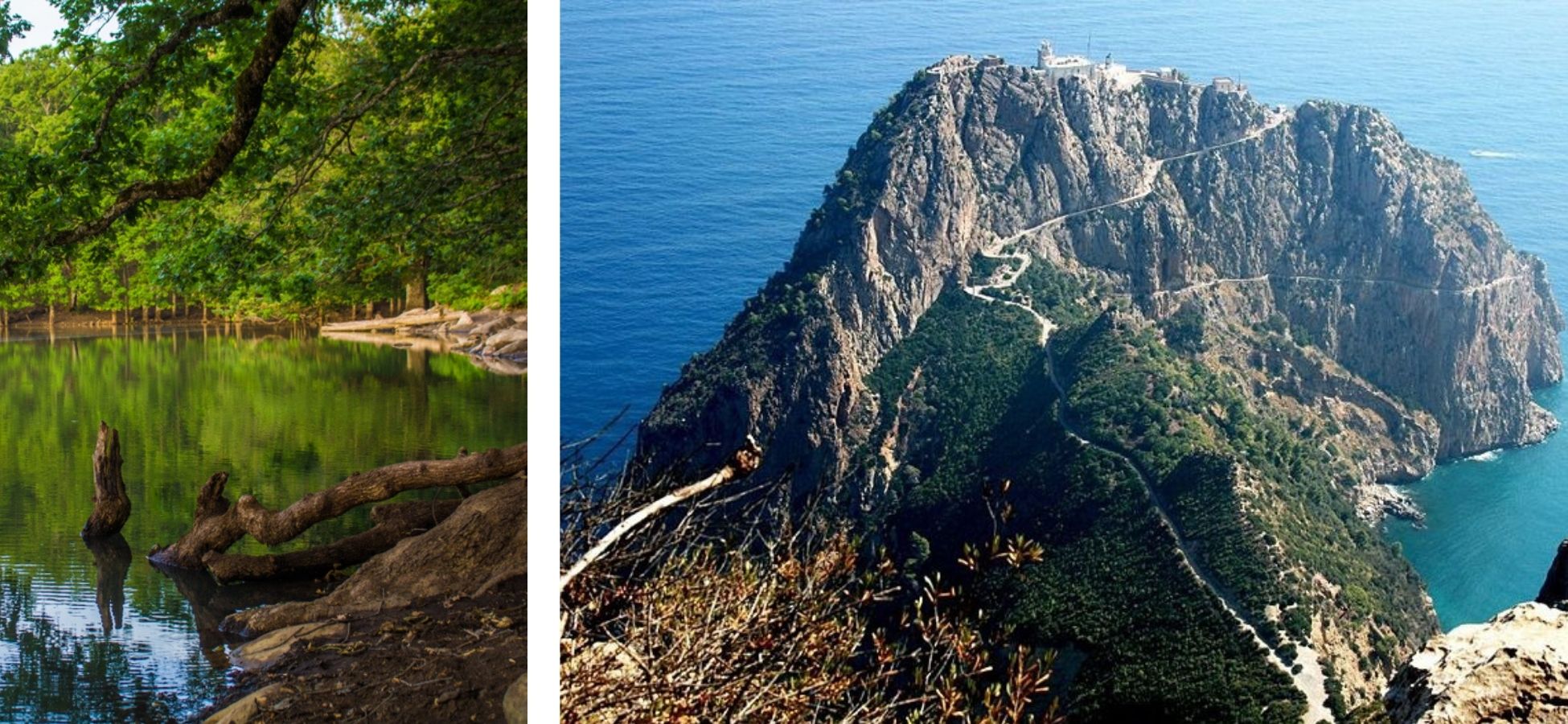
On the left, Lake Akfadou – On the right, Cap Carbon – Photo credit: Shutterstock – badiskharfane & Wikipedia – PhR61
After this superb walk, take a detour to Lac Noir d’Akfadou, located a few kilometers from Béjaïa. Also enjoy the superb landscapes offered by its immense forest, before returning for a moment of relaxation, in the city center of Béjaïa.
Because the so-called “candle” (it was one of the first suppliers of beeswax candles) offers a marvelous town centre. Stroll through its small streets, or stop for a coffee at the Place du 1er Novembre… In short, enjoy the sweetness of Béjaïa, and that of its inhabitants.
National parks
We have finally arrived at the highlight of our visit to Kabyle lands… The national parks! True divine masterpieces, these green settings nestled in the heart of the mountains are a blessing. They are the real wealth of Kabyle landscapes, and leave no one unmoved.
To start this journey, we are taking you to the Djurdjura National Park.
Djurdjura National Park

Photo credit: Shutterstock – Alvarodz
Although it takes its name from the mountain range of Djurdjura, the limits of which it shelters, this national park could not simply be defined by a mountain. Indeed, stretching from Tizi-Ouzou to Bouira, the wealth of Djurdjura is infinitely great.
If you are looking for a landmark for hiking and exploring, you have come to the right place. More than 1,100 plant species grow here, ie almost two thirds of the country’s total flora… All of this is the result of a particularly green nature, irrigated by numerous water sources and streams coming from the mountains. You can also find many lakes in the heart of Djurdjura, but the water may be particularly cold there…
Djurdjura National Park, Kabylia – Photo credit: Shutterstock – vividin
But Djurdjura is also home to an impressive fauna: more than 35 species of mammals have found refuge there. Among them, the famous Barbary macaque, but also striped hyenas, jackals, crested porcupines… In short, a real animal kingdom.
Flying over the horizons, you can also admire the majesty of the golden eagle, as well as the very particular flight of several species of falcons.
Left, Barbary macaque – Right, striped hyena – Photo credit: Shutterstock – monticello & Andrew M. Allport
As you will have understood, visiting Djurdjura is a decisive step, essential to your trip to the heart of the Kabyle lands. Fascinating, you will miss it the very second you leave it… But be careful, to contemplate it, we strongly advise you to go through a travel agency, which will take care of the organization of this visit.
Gouraya National Park

Gouraya National Park, Kabylia – Photo credit: Shutterstock – MohamedHaddad
While some call it “Corsica of Kabylie”, probably in view of its cliffs which flow directly into the Mediterranean, we find in Gouraya National Park other similarities, more “exotic”… with Southeast Asia. .
Already, from the sea, its cliffs seem to have been deposited there by a superior force, reminding us of the rocks of Halong Bay . Inaccessible, wildly cut and overlooking a vast expanse of water, the resemblance is striking. Not accessing it during your stay in Kabylia would be an offense to the beauty of this site, listed as a UNESCO World Heritage Site since 2004.
Gouraya is located in the northeast of Algeria, in the heart of the wilaya of Béjaïa, on the shores of the Mediterranean. And if each year, more than a million tourists tread its soil, it is because it shelters within it many riches.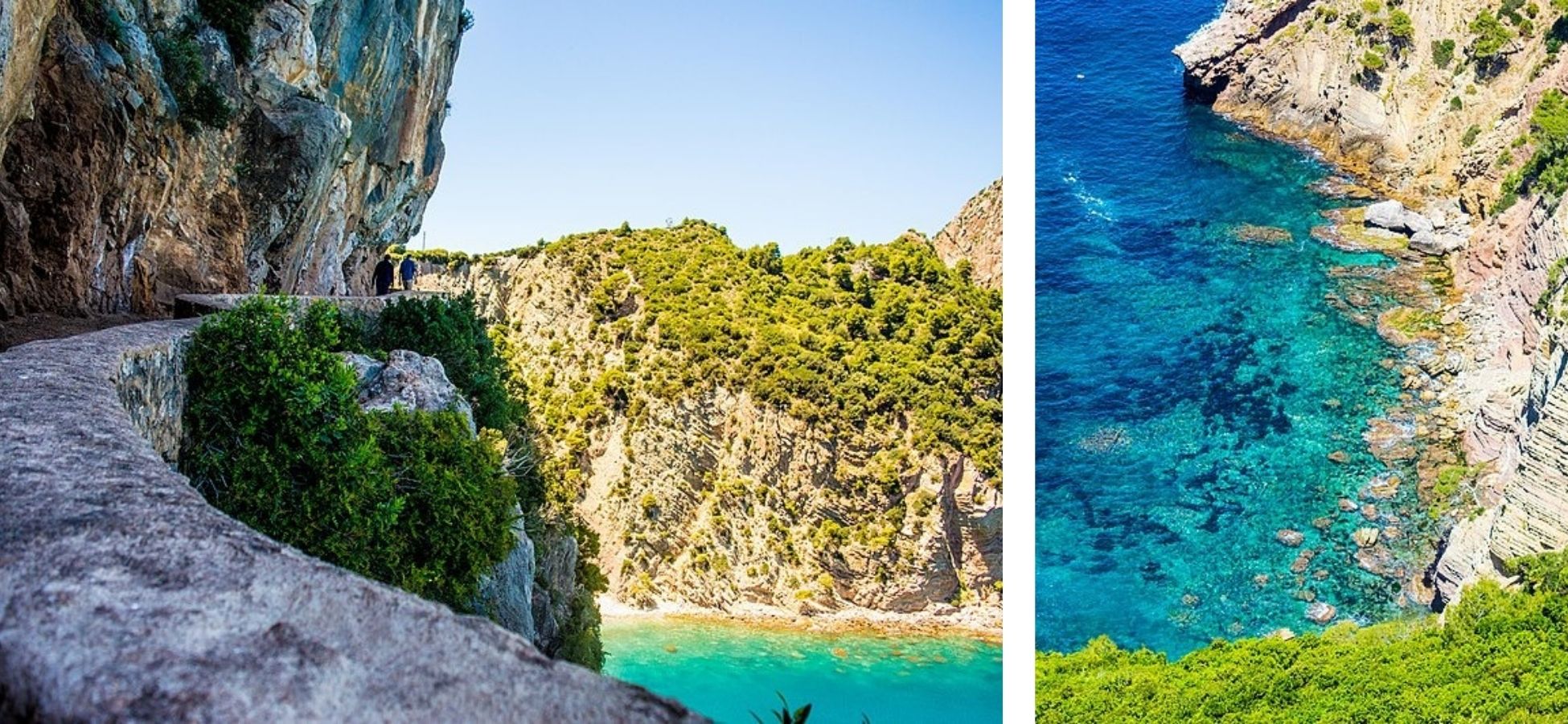
Gouraya National Park, Kabylia – Photo credit: Wikipedia – Halim Ben Khalfallah
And one of its surprises, just like in the heart of Halong Bay, are its sublime fine sandy beaches. Throughout your journey through Gouraya National Park, you will find a succession of beaches and coves, each more attractive than the next. Take the opportunity to take a break and refresh yourself in its crystal clear waters.
Once you’ve caught your breath, you can continue on your way and discover the Yemma Yemma mausoleum, the cornice of the great lighthouse, the Gouraya fort, the Riac tower… And many more wonders. We choose not to reveal everything to you, because each discovery will increase in you the satisfaction of the explorer in front of his treasure.
But with an area of 32 km², one day will not be enough to discover the wonderful memories that Gouraya will offer you… Take the opportunity to spend several days there and appreciate the sweetness of its city in the evening.
The coast road
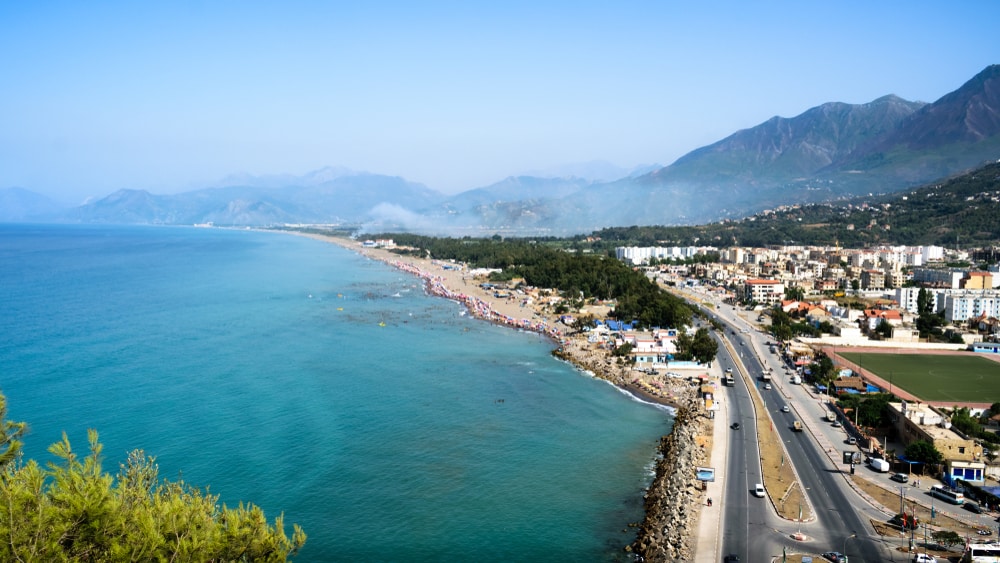
Coastal road, Kabylia – Photo credit: Shutterstock – Walderfoto
To end our stay, it is on the road that we take you, that of the coast. After all, what could be better than driving from the seaside to the land, the windows open, to take the time to rehash the memories of your trip? And then, the RN 24 is established from Algiers to Béjaïa. As Gouraya is in the heart of this last wilaya, you can take this road in the other direction.
Thus, you will cross the 222 km of this road leading to Algiers, to continue your journey on Algerian lands. And once again, this road will have surprises in store for you. After about fifty kilometers, you will arrive at the outskirts of the wilaya of Tizi-Ouzou. You can stop there to visit the time of an afternoon its chief town, bearing the same name. Thus, you will enjoy its cultural heritage and be able to learn more about its emotionally charged history, while chatting with its inhabitants over a good tea or coffee…
Then take the road for about 60 kilometers, until you reach the wilaya of Boumerdès. Here, the “coastal road” is aptly named. Located by the sea, the one that was formerly called “Black Rock” exudes a sweetness that only coastal towns have the secret. Although it is located on the shores of the Mediterranean, it reminds us of certain Breton towns…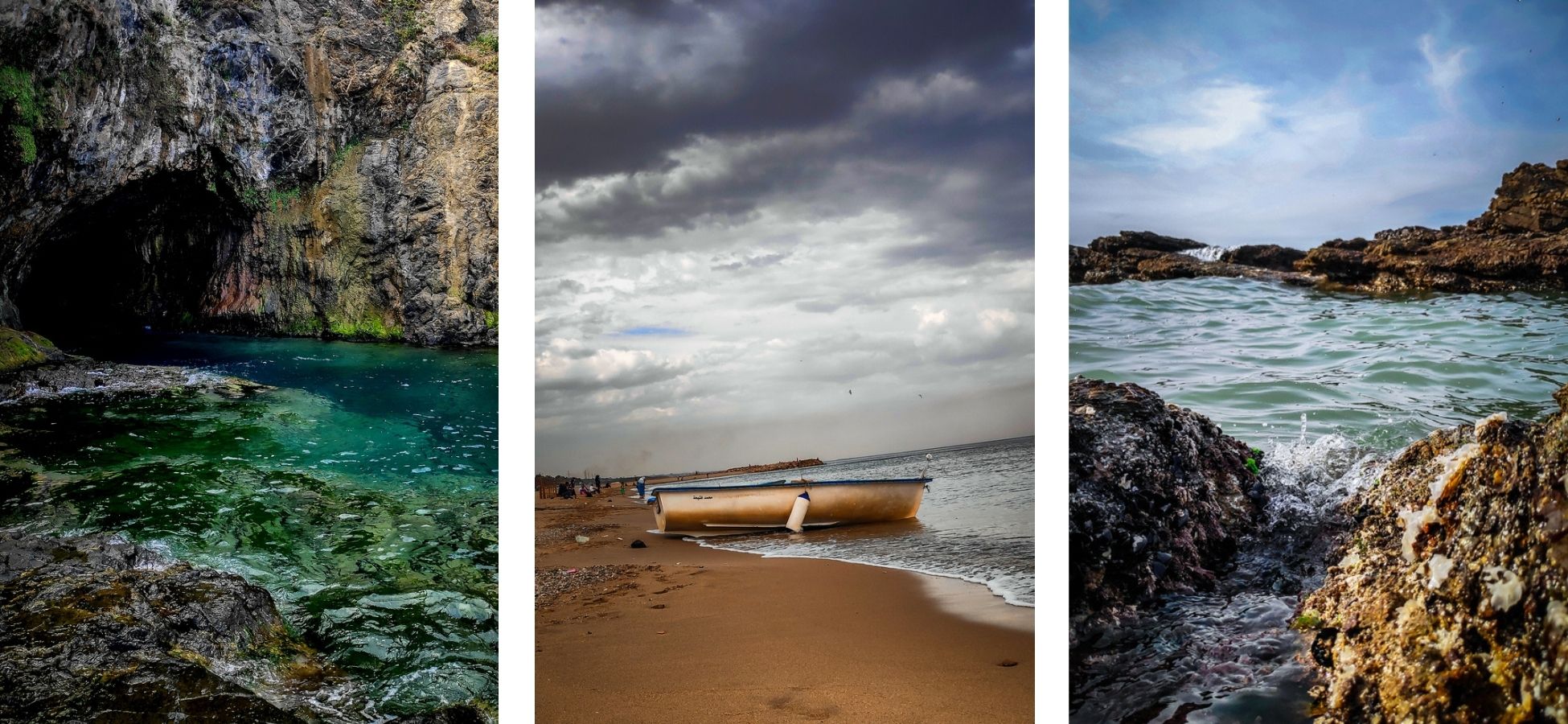
Boumerdes, Algeria – Photo credit: Shutterstock – Oussama.houssam
But beyond its sunny beaches, Boumerdès also benefits from many natural water sources, such as that of Haï Foaïs , which promise you particularly pleasant moments… A great way to conclude your stay in Kabylie.
So, to continue your journey and discover the magnificence of Algeria, which is far from stopping at the Kabyle “borders”, you will take the RN 24 back to the wilaya of Algiers. Another journey will then begin for you… A journey that will offer you new sensations as well as new landscapes.
Then discover Algeria, a welcoming land almost 90% covered with desert and whose size makes it one of the most beautiful countries in Africa, one of the most beautiful countries in the world.
Did you like this article? Do not hesitate to share it on social networks and subscribe to Discover the World on Google News to not miss any articles!